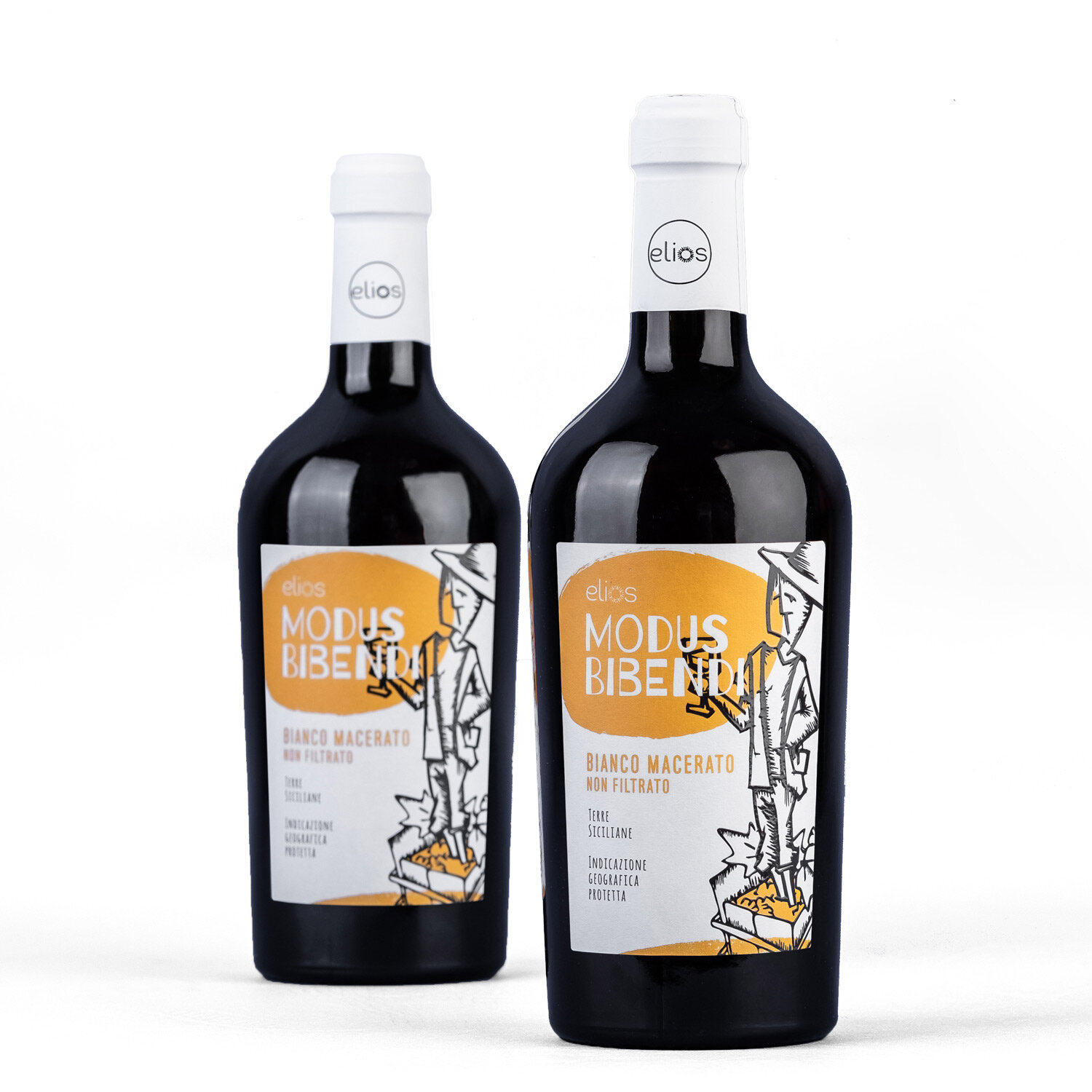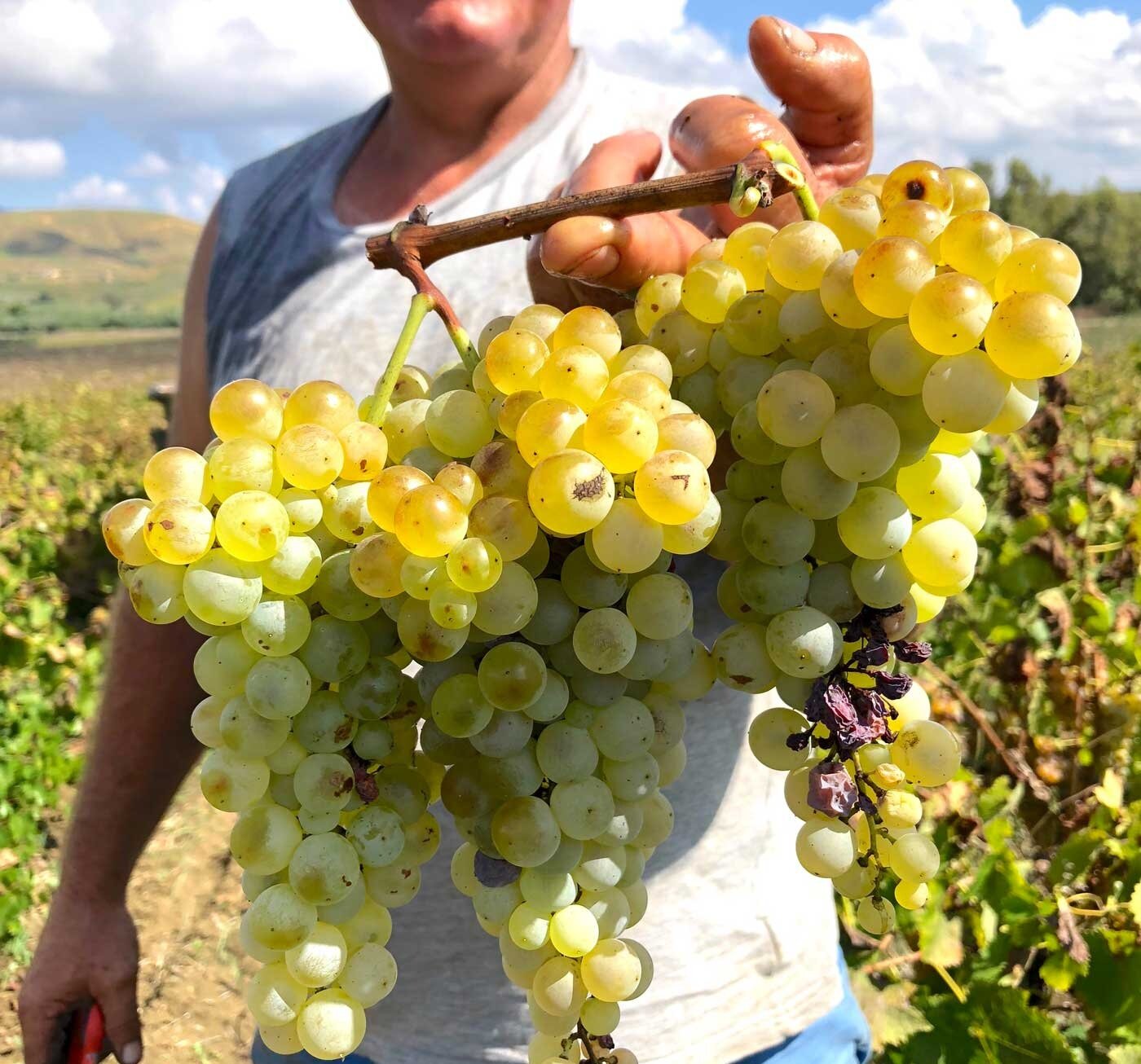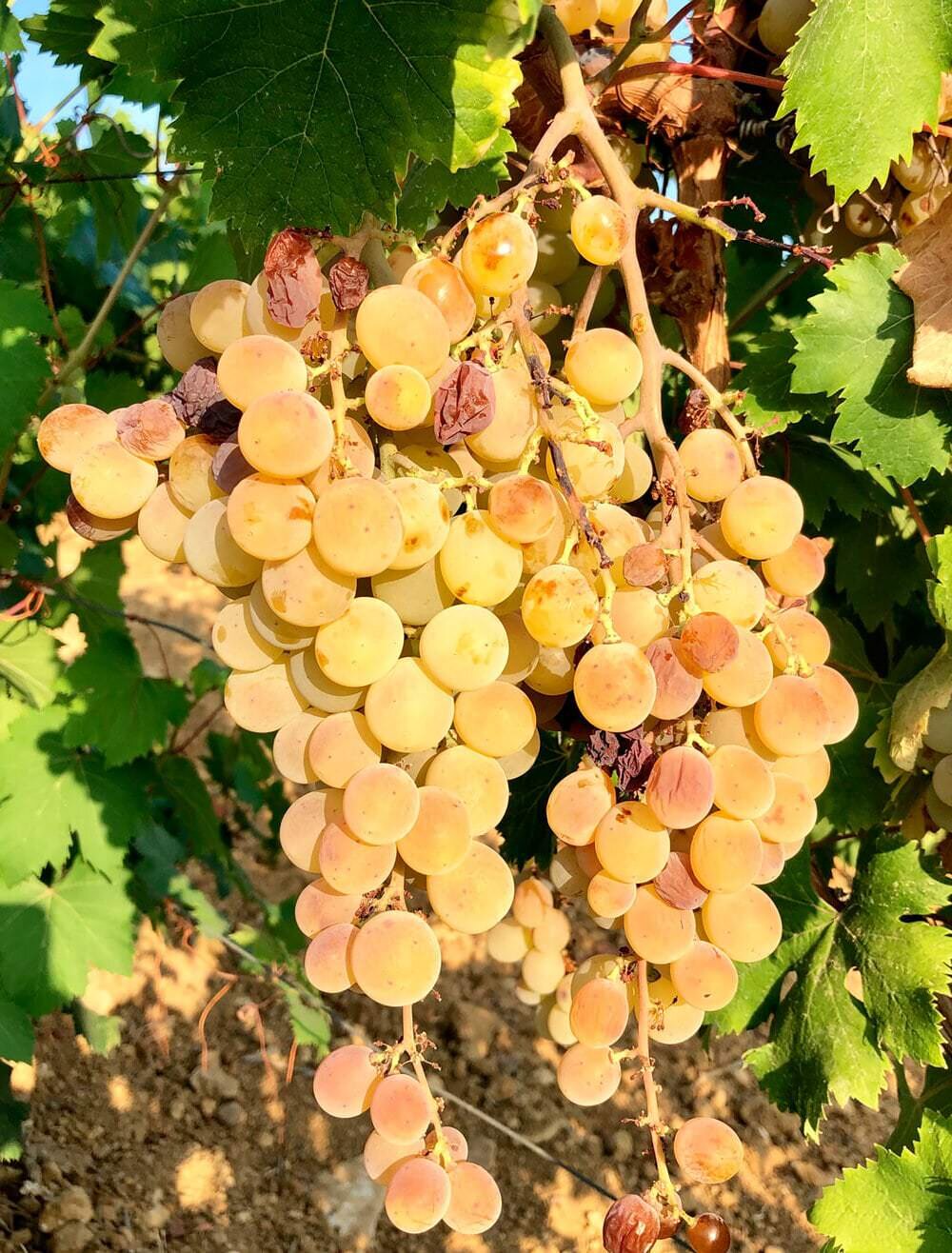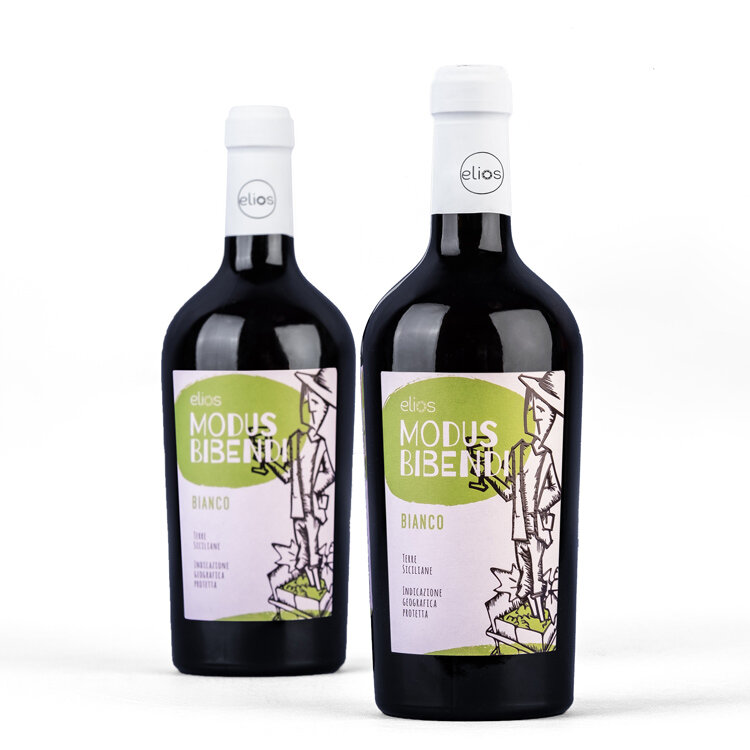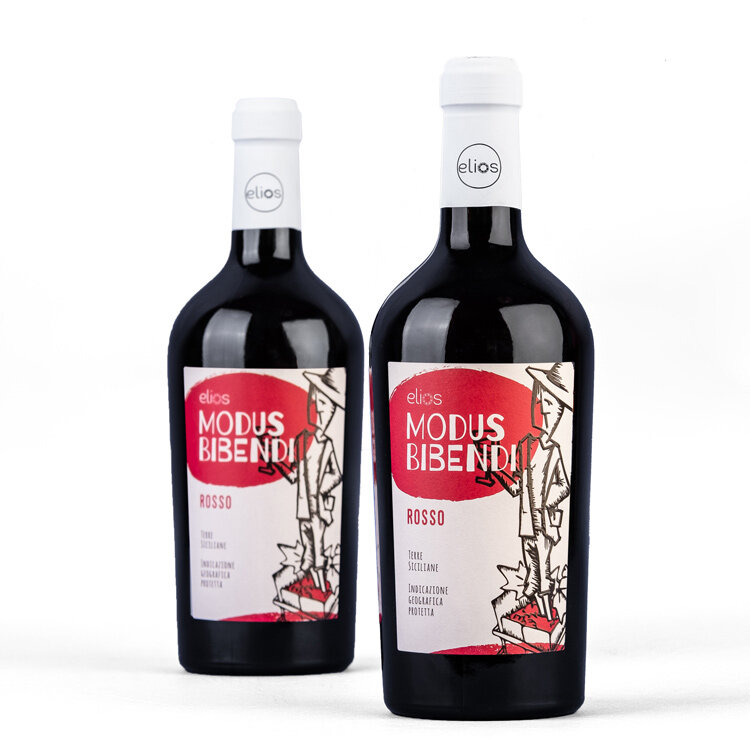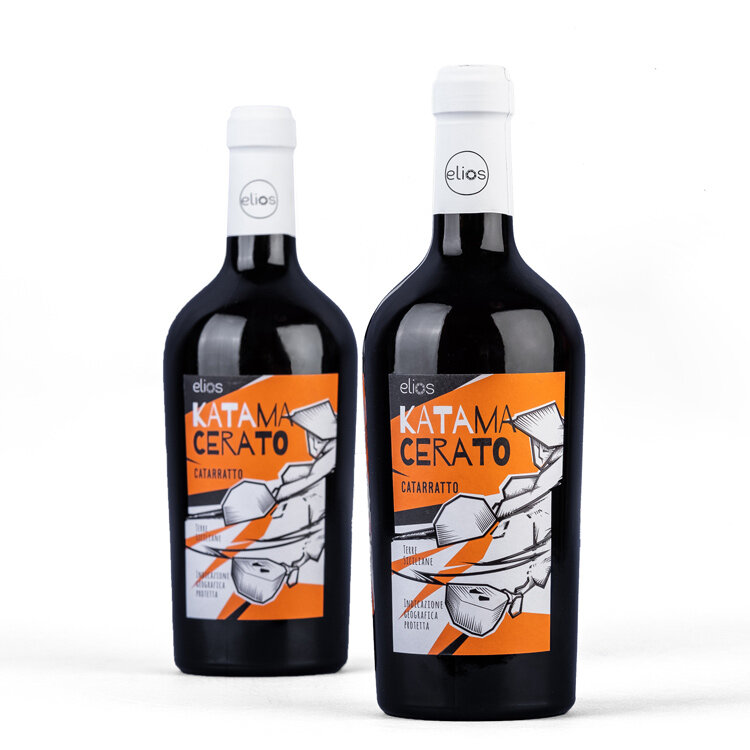Orange Wine – Catarratto, Zibibbo and Grillo from Sicily
WHAT IS A NATURAL WINE?
NATURAL WINES ARE made only with organic/biodynamic grapes, without adding or subtracting anything in the cellar. No additives, no chemicals, no aromas, no selected yeasts, low sulfur, that’s it.
MODUS BIBENDI BIANCO MACERATO from
Catarratto, Zibibbo, Grillo grapes
GRAPES VARIETIES: Catarratto, Zibibbo, Grillo
MACERATION 20 days - SOIL clay, sand, stones - AGEING 7 months in stainless steel tin
WINEMAKING natural, spontaneous fermentation
VINTAGES AVAILABLE: 2018
Orange Wine is our natural skin-contact blend from Sicily, made from Catarratto, Zibibbo and Grillo grapes, crafted to reveal texture, aromatic complexity and Mediterranean character.
✦ The IDEA OF THE wine
Our vineyards are spread across different areas around Alcamo, each with its own soils and microclimate, from inland hills to coastal parcels. This diversity is clearly reflected in the character of the grapes.
Some vineyards naturally find their balance as single variety wines. Others, while rich in potential, express themselves better through dialogue rather than isolation.
This is the foundation of our Bianco Macerato: a blend born from inland Catarratto from the Monreale area, combined with Grillo and Zibibbo from the coastal vineyards around Alcamo.
Catarratto provides the wine’s acidic backbone, Grillo brings body and cohesion, and Zibibbo adds aromatic lift. Skin maceration binds these elements together, allowing each grape to play its role while forming a balanced and expressive whole.
✦ The vineyard
Our vineyards extend across several macro-areas around Alcamo, each with its own soils and microclimates, some closer to the sea, others more inland. These differences shape the grapes and give the final wine its layered personality.
For this blend:
Catarratto comes from the inland vineyards around Monreale, bringing structure and a lively acid backbone;
Zibibbo and Grillo come from vineyards near Alcamo, where proximity to the coast adds brightness and aromatic lift.
Together, these vineyards offer a tapestry of sun, wind, soil and sea-influenced freshness that is essential to this wine’s character.
✦ In the cellar
Vinification is guided by our natural philosophy:
spontaneous fermentation
extended maceration on skins for ~20 days
ageing for 7 months in stainless steel
The extended skin contact is the defining step: it gives the wine its texture, amber hue, aromatic richness and tannic support, while stainless steel preserves clarity and energy.
We intervene only to support the wine’s natural evolution, never to redirect it ensuring the final expression remains true to the grapes and the place where they grew.
✦ Tasting
Modus Bibendi Bianco Macerato carries a presence that is both tactile and aromatic.
On the nose, expect an interplay of orchard fruit, warm Mediterranean herbs and subtle floral nuances a bouquet that reflects the diversity of its component grapes and the layered soils they grew in.
On the palate, the wine is rich and textured, with balanced acidity, a lingering savory edge and a finish that echoes with both freshness and depth. The influence of skin contact is clear: a wine with structure, nuance and an inviting amber glow.
✦ Grapes and their roles
This blend is a thoughtful synergy of three varieties:
Catarratto gives the wine its acid “shoulder,” anchoring the profile with energy and drive;
Grillo contributes body and connective structure, tying together the components;
Zibibbo brings aromatic lift and perfume, completing the aromatic palette.
The maceration integrates these features into a balanced and expressive whole a wine where each part enhances the others.
THE VARIETIES: CATARRATTO, ZIBIBBO, GRILLO
CATARRATTO
The variety is grown all over Sicily, though concentrated in three provinces: Trapani, Palermo, and Agrigento. Traditionally, Catarratto wine was vinified as cheap bulk wine, usually made into sweet goop. With the coming of modern winemaking to Italy, some producers have turned to producing good-quality wine from the variety, with success. A well-made Catarratto has freshness and minerality, a good body, and citrus and herbal flavors. It may also exhibit slightly nut-like tastes. In some cases, the makers have applied some oak-barrel aging as well, which seems to work satisfactorily.
ZIBIBBO
The story of Muscat is complicated, chiefly because the ancestral grape is ancient—it was in common use by the Greeks (as Anathelicon moschaton and the Romans (as Uva Apiane), and has had numerous travels since. Actually, even that is a gross over-simplification, because it refers to the particular Muscat grape we are considering here, the Muscat Blanc (or, more fully, Muscat Blanc à Petits Grains, aka Moscato Bianco, Muscat Canelli, and a lot more—look at the list a bit up-page); the Muscat family of grapes comprises many more types (over 200!) with which we will not deal here. As best anyone knows, their origins lie in Greece.
Of the more than 200 grape varieties sharing "Muscat" (or one of its synonyms) in their name, the majority are not closely related to each other. The exception are the members of the Muscat blanc à Petits Grains and Muscat of Alexandria families. In the early 21st century, DNA analysis showed that Muscat of Alexandria was, itself, a natural crossing of Muscat blanc à Petits Grains and a black-skinned table grape variety from the Greek islands known as Axina de Tres Bias.
Descriptions of the wine: grape-y, with overtones of orange plus the usual roster of floral/spice suspects. The essence of dry Muscat is to retain the floral and fruity/spicy quality (especially in the nose), with a good acid balance; poorly made ones are either not all that “dry”, or else have lost sublety.
GRILLO
Created by an artificial crossing of Catarratto Bianco and Zibbibo (Moscato di Alessandria) in Agrigento, Sicily in 1869 by Baron Antonio Mendola, an agronomist and expert of grape varieties, Grillo is nowadays one of the most cultivated variety in Sicily, after the Catarratto.
Grillo is not an aromatic or flavored grapes, but at its best it is full-bodied, earthy almost to the point of astringency, and can be bottle-aged to benefit. It will have a creamy feel, though with good acidity, and a sense of faint and indistinct but broad-spectrum fruit flavors, tending toward the citrus-y. Balsamic notes and nuts if aged “sur lies”.
[varieties info credits: WIKIPEDIA & thatusefulwinesite.com]
CATARRATTO GRAPES
ZIBIBBO GRAPES
GRILLO GRAPES
CLICK ON THE BUTTONS BELOW
TO KNOW MORE ABOUT THE OTHER WINES
MODUS BIBENDI GRILLO
MODUS BIBENDI NERO D’AVOLA
GLOU GLOU ROSSO FROM
NERELLO MASCALESE
KATAMACERATO FROM CATARATTO

